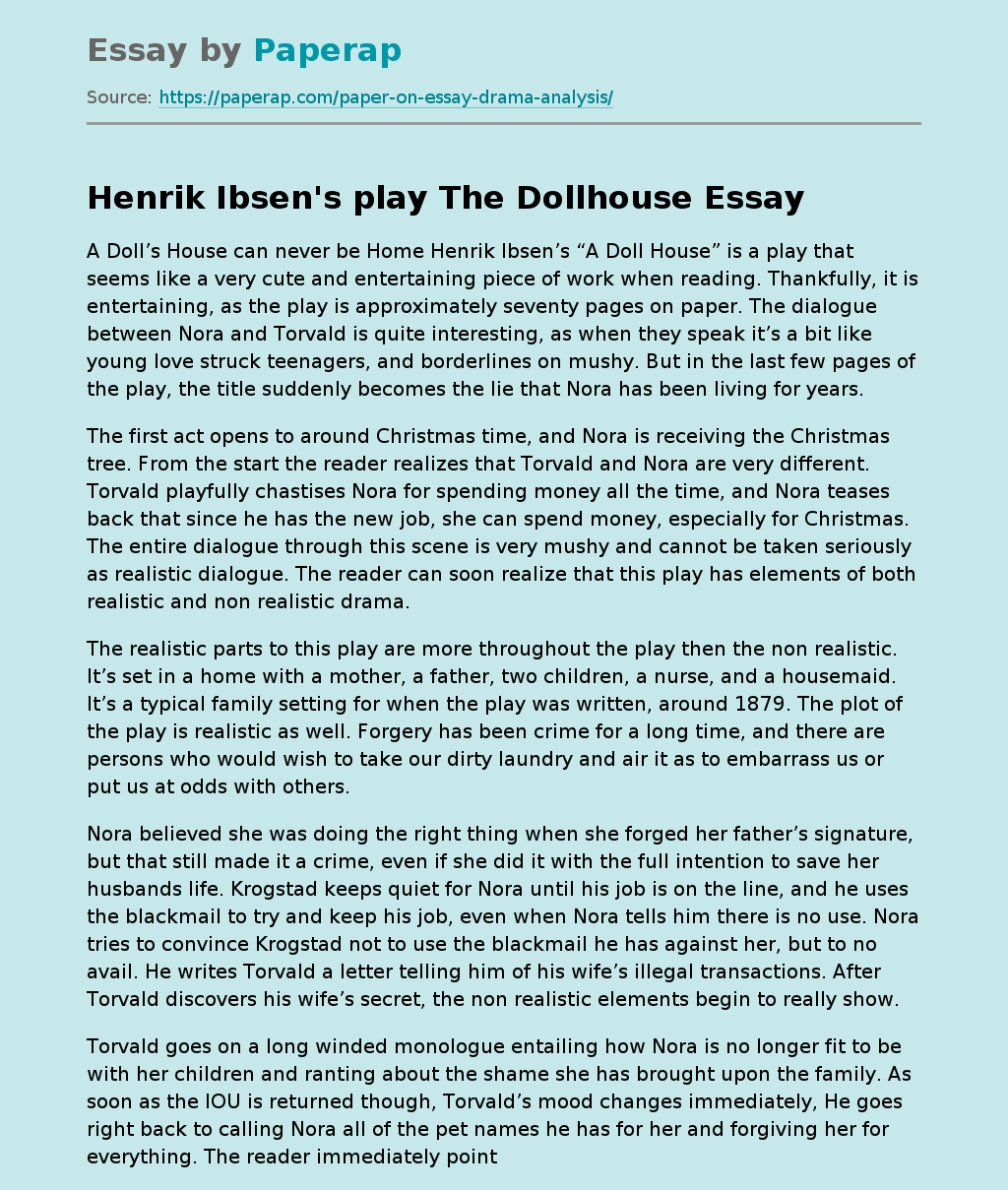Henrik Ibsen's play The Dollhouse
A Doll’s House can never be Home Henrik Ibsen’s “A Doll House” is a play that seems like a very cute and entertaining piece of work when reading. Thankfully, it is entertaining, as the play is approximately seventy pages on paper. The dialogue between Nora and Torvald is quite interesting, as when they speak it’s a bit like young love struck teenagers, and borderlines on mushy. But in the last few pages of the play, the title suddenly becomes the lie that Nora has been living for years.
The first act opens to around Christmas time, and Nora is receiving the Christmas tree. From the start the reader realizes that Torvald and Nora are very different. Torvald playfully chastises Nora for spending money all the time, and Nora teases back that since he has the new job, she can spend money, especially for Christmas. The entire dialogue through this scene is very mushy and cannot be taken seriously as realistic dialogue.
The reader can soon realize that this play has elements of both realistic and non realistic drama.
The realistic parts to this play are more throughout the play then the non realistic. It’s set in a home with a mother, a father, two children, a nurse, and a housemaid. It’s a typical family setting for when the play was written, around 1879. The plot of the play is realistic as well. Forgery has been crime for a long time, and there are persons who would wish to take our dirty laundry and air it as to embarrass us or put us at odds with others.
Nora believed she was doing the right thing when she forged her father’s signature, but that still made it a crime, even if she did it with the full intention to save her husbands life. Krogstad keeps quiet for Nora until his job is on the line, and he uses the blackmail to try and keep his job, even when Nora tells him there is no use. Nora tries to convince Krogstad not to use the blackmail he has against her, but to no avail. He writes Torvald a letter telling him of his wife’s illegal transactions. After Torvald discovers his wife’s secret, the non realistic elements begin to really show.
Torvald goes on a long winded monologue entailing how Nora is no longer fit to be with her children and ranting about the shame she has brought upon the family. As soon as the IOU is returned though, Torvald’s mood changes immediately, He goes right back to calling Nora all of the pet names he has for her and forgiving her for everything. The reader immediately points this out as non realistic, for nobody that is that upset will change moods so quickly. But there has been a change for Nora. She realizes that the entirety of her marriage she has lived a doll’s life, in a doll’s house.
She leaves Torvald in order to find out who she really is, because she realizes neither Torvald nor her are really themselves. They are who they want the other to believe and like, and she discovers she doesn’t need Torvald to make her way in the world. The play is both realistic and non realistic in some ways. But the reader can be both entertained and spoken to through this work. Nora found that she lived in a doll’s house, and maybe many more of us are living there with her than we would like to admit.
Henrik Ibsen's play The Dollhouse. (2019, Nov 27). Retrieved from https://paperap.com/paper-on-essay-drama-analysis/

